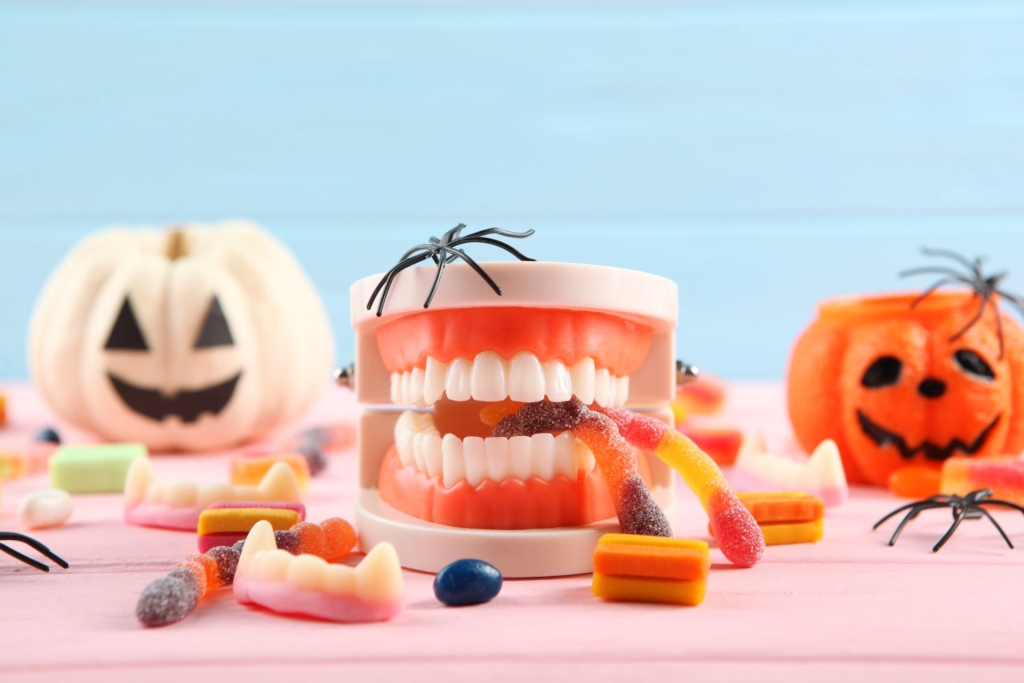Dental Tips for Healthy Smiles
We know it’s not always easy to get kids to practice good dental hygiene. However, it’s a good idea to assess your family’s oral health habits year-round and, if needed, make adjustments to ensure everyone stays on track. Here are a few tips that will help you encourage your little ones to practice oral health at a young age, setting the foundation for healthy adult teeth.
Change Toothpastes
If you are having a difficult time getting your child to brush, consider changing things up a bit with a new toothpaste. Not all kids like the minty taste of adult toothpastes. Children’s mouths are more sensitive and the tingling sensation associated with a minty toothpaste can often create a burning sensation. Instead, help your child to select a more kid-friendly toothpaste with a fun taste, such as bubblegum. Browse toothpastes containing the American Dental Association seal of approval here.
Buy a New Toothbrush
It is always a good idea to change out toothbrushes at least a couple of times per year and after you have been sick. Let your child pick out a special toothbrush they are sure to use. Cool designs, characters, and interactive components will have your child reminding you when it’s time to brush.
Make it Fun
Make brushing time feel like less of a chore and more like playtime by playing a song when your child is brushing his or her teeth. The American Dental Association recommends brushing two times a day for two full minutes. This is about the same length as a song. Have your child select a song of their choice and play it during brushing time.
Make Brushing a Group Activity
Whatever your child sees you do, he or she will want to do as well. By brushing your teeth together, you set a good example and can encourage your child to develop good brushing habits.
Encourage Flossing
Flossing can be challenging, even for adults. To make the process easier for your child, consider using small flossers that are made just for them. Try flossers with bright colors and animal shapes.
Implement a Reward System
Kids are often motivated to complete chores when offered fun incentives. Try using NOAH’s free printable daily tracker to keep track of each day that your child brushes and flosses. At the end of each week, let your child choose a healthy reward. Implementing a reward system is a great way to encourage and make dental health fun.
Reduce Dental Visit Anxiety
It is not unusual for some children to be afraid of a visit to the dentist. Help your child feel more comfortable by setting a positive example and avoiding the use of negative words, such as pain or hurt.
Schedule a visit with your NOAH dental provider today!
Consejos dentales para sonrisas saludables
Sabemos que no siempre es fácil conseguir que los niños practiquen una buena higiene dental. Sin embargo, es una buena idea evaluar los hábitos de salud bucal de su familia durante todo el año y, si es necesario, hacer ajustes para garantizar que todos se mantengan en el buen camino. Aquí hay algunos consejos que le ayudarán a animar a sus pequeños a practicar la salud oral a una edad temprana, estableciendo las bases para los dientes adultos sanos.
Cambiar las pastas dentales
Si le está costando hacer que su hijo se cepille, considere cambiar un poco las cosas con una pasta dental nueva. No a todos los niños les gusta el sabor mentado de las pastas dentales adultas. La boca de los niños es más sensible y la sensación de hormigueo asociada con una pasta dental de menta a menudo puede crear una sensación de ardor. En su lugar, ayude a su hijo a seleccionar una pasta dental más amigable para niños con un sabor divertido, como el bubblegum.
Comprar un cepillo de dientes nuevo
Siempre es una buena idea cambiar los cepillos de dientes al menos un par de veces al año y después de haber estado enfermo. Deje que su hijo elija un cepillo de dientes especial que seguramente usará. Los diseños, personajes y componentes interactivos geniales harán que su hijo le recuerde cuándo es el momento de cepillarse.
Hazlo divertido
Haga que el tiempo de cepillado se sienta menos como una tarea y más como un tiempo de juego al tocar una canción cuando su hijo se cepille los dientes. La Asociación Dental Americana recomienda cepillarse dos veces al día durante dos minutos completos. Esto es aproximadamente la misma duración que una canción. Haga que su hijo seleccione una canción de su elección y juegue durante el tiempo de cepillado.
Haz del cepillado una actividad grupal
Lo que sea que su hijo vea que usted hace, él o ella también querrá hacerlo. Al cepillarse los dientes juntos, usted da un buen ejemplo y puede animar a su hijo a desarrollar buenos hábitos de cepillado.
Fomentar el uso del hilo dental
El hilo dental puede ser difícil, incluso para los adultos. Para hacer el proceso más fácil para su hijo, considere el uso de pequeñas flores que se hacen sólo para ellos. Pruebe flossers con colores brillantes y formas animales.
Implementar un sistema de recompensas
A menudo, los niños están motivados a completar las tareas cuando se les ofrecen incentivos divertidos. Intente usar el rastreador diario imprimible gratuito de NOAH para realizar un seguimiento de cada día que su hijo cepilla y usa hilo dental. Al final de cada semana, deje que su hijo elija una recompensa saludable. Implementar un sistema de recompensas es una gran manera de fomentar y hacer que la salud dental sea divertida.
Reducir la ansiedad de la visita dental
No es raro que algunos niños tengan miedo de una visita al dentista. Ayude a su hijo a sentirse más cómodo dando un ejemplo positivo y evitando el uso de palabras negativas, como dolor o dolor.



